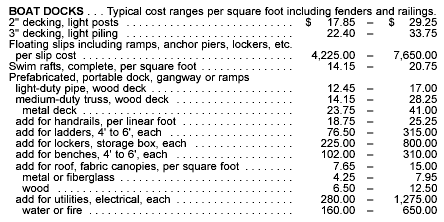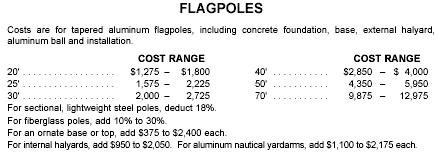
OverviewOne of the main uses of custom components is to add costs for items in the Marshall Valuation Service (MVS) or the Residential Cost Handbook (RCH) that are not available in one or more of the SwiftEstimator programs. This help topic contains the following: Special Field Entries for M&S Book Components |
Related Topics |
The following indicates what you should enter in some of the fields on the Custom Component Data screen when creating a custom component from he Marshall Valuation Service (MVS) or the Residential Cost Handbook (RCH):
Base Date: Enter Base Date as the date on the page in the MVS or RCH from which you obtained the cost.
M&S Source: Select either MVS or RCH as the source, select the appropriate section, then enter the page number from which you obtained the cost. Leave the Other Source line blank.
Trend: Check "Trend Cost from Base Date to Report Date" to have SwiftEstimator trend the cost from the date on the MVS or RCH page to the date of the report.
Local Multiplier: Since the costs in the MVS and RCT are national average costs, check "Apply Local Multiplier" to localize the costs in the report.
Unit Costs: Enter the cost per unit for each quality level in the Cost Per Unit section. The MVS typically has costs for Low, Average, Good and Excellent. In such cases, enter these costs then click the Calculate button.
Note: For the unit costs, If the MVS or RCH only has a cost range, enter the lower cost in the range as the Low Unit Cost and the higher cost in the range as Excellent Unit Cost, then use straight-line interpolation to calculate the Average and Good costs using the following formulas:
Average Cost = Low Cost + 1/3 of the difference between the Excellent Cost and the Low Cost
Good Cost = Low Cost + 2/3 of the difference between the Excellent Cost and the Low Cost
You must also enter a Code for the custom component, and can enter any of the optional information (such as the Name, Unit of Measure and a Definition, as illustrated in the examples).
Page C-7 in the Residential Cost Handbook, published in March, 2004, has the following costs for Boat Docks:

The following entries should be made to the fields indicated above for a Floating Slip:
|
Field |
Data |
|
Name |
Floating Boat Slip |
|
Unit of Measure |
Each |
|
Base Date |
03/2004 |
|
M&S Source |
Residential Cost Handbook |
|
M&S Source: Section |
C Yard Improvements |
|
M&S Source: Page |
C-7 |
|
Trend |
Yes (checked) |
|
Local Multiplier |
Yes (checked) |
|
Costs |
Low: 4225 |
The Average and Good costs in this example were calculated using straight-line interpolation between the Low Cost and Excellent Cost:
Average Cost = 4255 + .333 * (7650 - 4225) = 5367
Good Cost = 4255 + .667 * (7650 - 4225) = 6508
You can click the Calculate button next to the costs to calculate the Fair and Very Good Costs.
Page 3 in Section 66 of the Marshall Valuation Service, published in December, 2003, has the following costs for Flagpoles:

The following entries should be made to the fields indicated above for a 20' Aluminum Flagpole:
|
Field |
Data |
|
Name |
Aluminum Flagpole (20') |
|
Unit of Measure |
Each |
|
Base Date |
12/2003 |
|
M&S Source |
Marshall Valuation Service |
|
M&S Source: Section |
66 Yard Improvements |
|
M&S Source: Page |
3 |
|
Trend |
Yes (checked) |
|
Local Multiplier |
Yes (checked) |
|
Costs |
Low: 1275 |
|
Definition |
A tapered aluminum flagpole, including concrete foundation, base, external halyard, aluminum ball and installation. |
The Average and Good costs in this example were calculated using straight-line interpolation between the Low Cost and Excellent Cost:
Average Cost = 1275 + .333 * (1800 - 1275) = 1450
Good Cost = 1275 + .667 * (1800 - 1275) = 1635
You can click the Calculate button next to the costs to calculate the Fair and Very Good Costs.